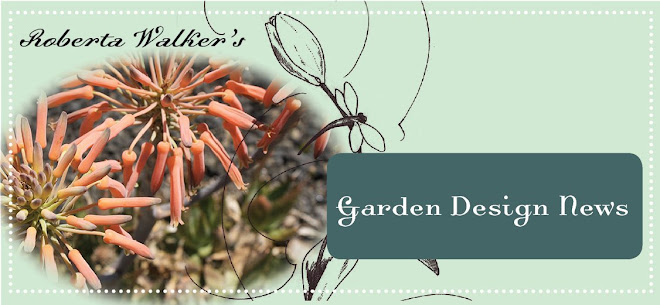Simple Tips For Enhancing Your Garden
Having a garden is one of the great joys of life – it’s your own
personal bit of paradise away from the hustle and bustle of the daily grind. Your own small
corner of the natural world where you can commune with nature and feel at ease
whenever external circumstance are beginning to get you down – or when you just
want to have some friends or family over for a good barbecue or relaxing
afternoon in the sun.
Since this bit of the great outdoors belongs to you and you alone, it
pays to make the most of it and to try and keep it in the best order possible.
It can either be an investment in your sense of wellbeing – where the time,
money and energy that you put in ends up paying dividends directly, with untold
hours of happiness and satisfaction -- or it can be a wasted resource, sitting
there beside your home as a shrine to unrealized potential.
The options for experimental flair are limitless. You can turn your
garden into a purely functional yard-space fitted with a well-sized shed
and turned
wholly towards some practical purpose; you can have it be a shrine to relaxation
and the more harmonic side of
life by creating a pond and introducing an artistic ornamental rock arrangement, you can
have it be a gardener’s paradise laden with harvestable fruit and vegetables.
The bottom line is that the power is in your hands if you choose to use it.
So if you’re the type of person who wants to get the most out of their
garden and seize the project of designing the perfect tailor-made environment
by the horns, here are some simple tips which can get you on the road:
Explore Your Options
Depending on your local environment and the kinds of plant-life that
might thrive there, your garden could end up being the embodiment of an entire
ecosystem in miniature. You could either replicate the most exotic parts of
your own immediate surroundings, you could introduce a variety of plant-life
and features which are not native to your geographical region but which are
none the less compatible with your climate, or you could use a variety of
clever landscaping techniques in order to provide some practical
benefit such as a landscape of drought resistant plants, deer resistant plants, etc. (Of course the
viability or necessity of either option depends largely on whether you’re
likely to have deer in your garden, or whether your local ecosystem is given to
undergoing periods of drought. Knowledge of your own unique circumstances is
the key factor in this step)
Clear Up
Before you can embark wholeheartedly on your gardening project, you’re
likely going to have to face a certain unfortunate reality which most
homeowners tend not to fully appreciate until they decide to take a more active
interest in gardening, or garden design. That is – gardens are often far more
messy places than you might have at first imagined. Beneath your attractive
lawn, flower beds, or any given bit of earth, it is not uncommon to find
construction rubble, waste, old trinkets, or any number of other strange things
buried away out of sight of prying eyes.
This issue becomes especially apparent when removing firmly planted
outbuildings and structures -- which are likely to require some demolition work
in order to clear away completely. In order
to address this problem and move forwards, you may need to contact an specialist,
or general purpose waste
removal company, or (if you’re confident that you won’t be dealing with hazardous
materials, but will just be needing to invest some elbow-grease) may at the
very least need to get hold
of a good set of gardening tools and take care of business yourself.
Do Things In The Right Order
Once you’ve got your garden vision defined, and have done the
necessary clean-up work in order to set the stage, your next step is to just
get started – but to do so with a careful consideration of the order that things
need to be done in.
Don’t
plant new plants until you’ve prepared the flower bed for them properly, and
have calculated your space requirements. Don’t introduce new features such as
rain-barrels or composters unless you’re roughly sure of where you want them
placed in order for them to not interfere somehow in the garden at large (i.e.
by blocking sunlight to some plants, by unbalancing the aesthetic of the garden
on the whole, etc). Take the old saying “measure twice, cut once” to heart. If
you have your ideas in order and carry out your various tasks sequentially,
you’re likely to end up with a great result. If not, then you may just learn
the hard way that constantly re-arranging a “garden in progress” can be a
stressful and sometimes damaging proposition.






